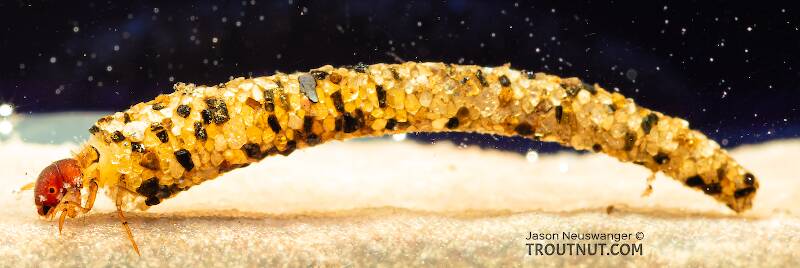
Hex Mayflies
Hexagenia limbata
The famous nocturnal Hex hatch of the Midwest (and a few other lucky locations) stirs to the surface mythically large brown trout that only touch streamers for the rest of the year.
Featured on the forum

Troutnut is a project started in 2003 by salmonid ecologist Jason "Troutnut" Neuswanger to help anglers and
fly tyers unabashedly embrace the entomological side of the sport. Learn more about Troutnut or
support the project for an enhanced experience here.
Creno on Aug 5, 2019August 5th, 2019, 3:37 pm EDT
Just getting back to the PC and a good look at your above pics. I don't think this is Gumaga. From what I can see it lacks the divided mesonotum and the metanotal sclerites are the wrong shape/size for Gumaga. The fact that you couldn't see the antennae makes me think they are right next to the eye. The rest of the characters also suggest this is one of the Lepidostoma and the case suggests pluviale group, which are very common in that part of the world.
Troutnut on Aug 6, 2019August 6th, 2019, 4:10 am EDT
Thanks Dave. I'll move it there.
Jason Neuswanger, Ph.D.
Troutnut and salmonid ecologist
Troutnut and salmonid ecologist




